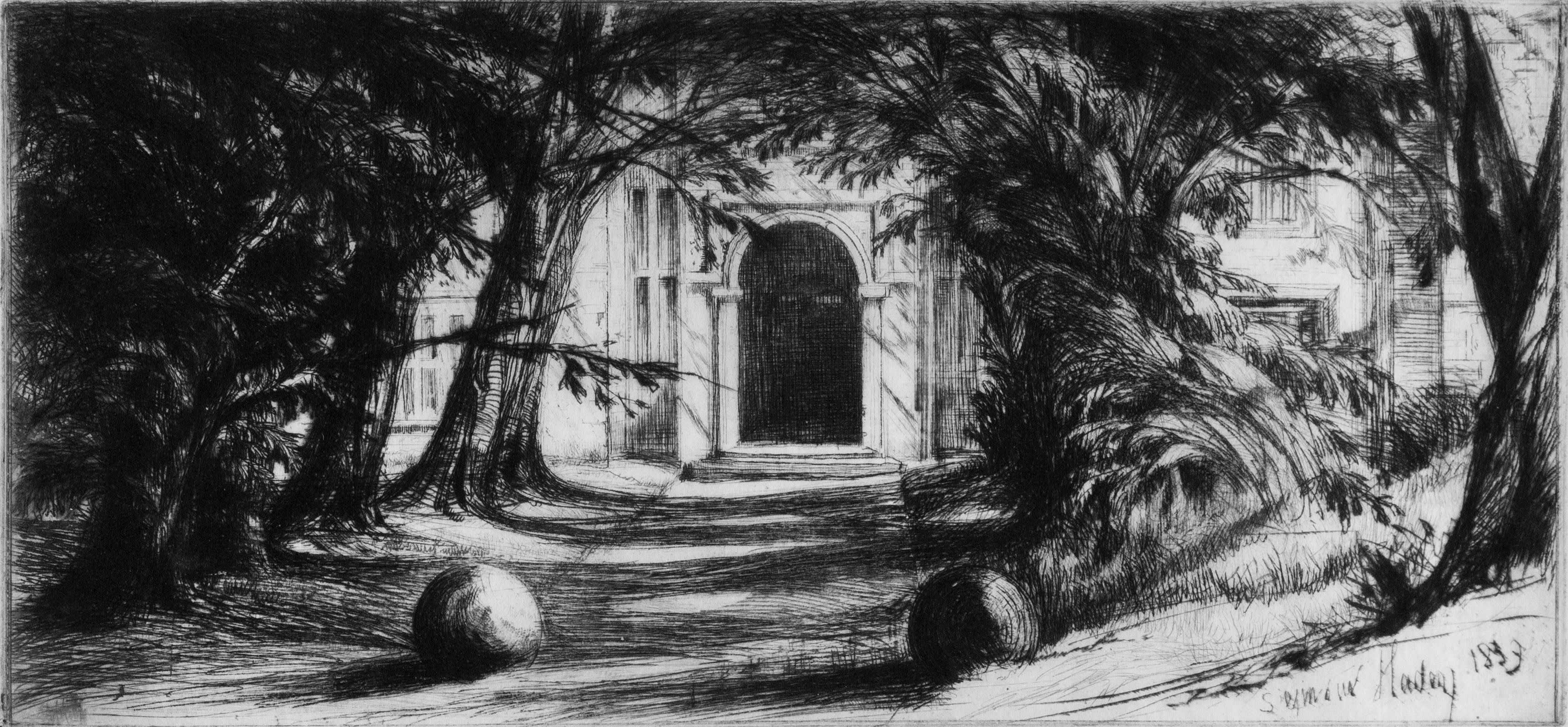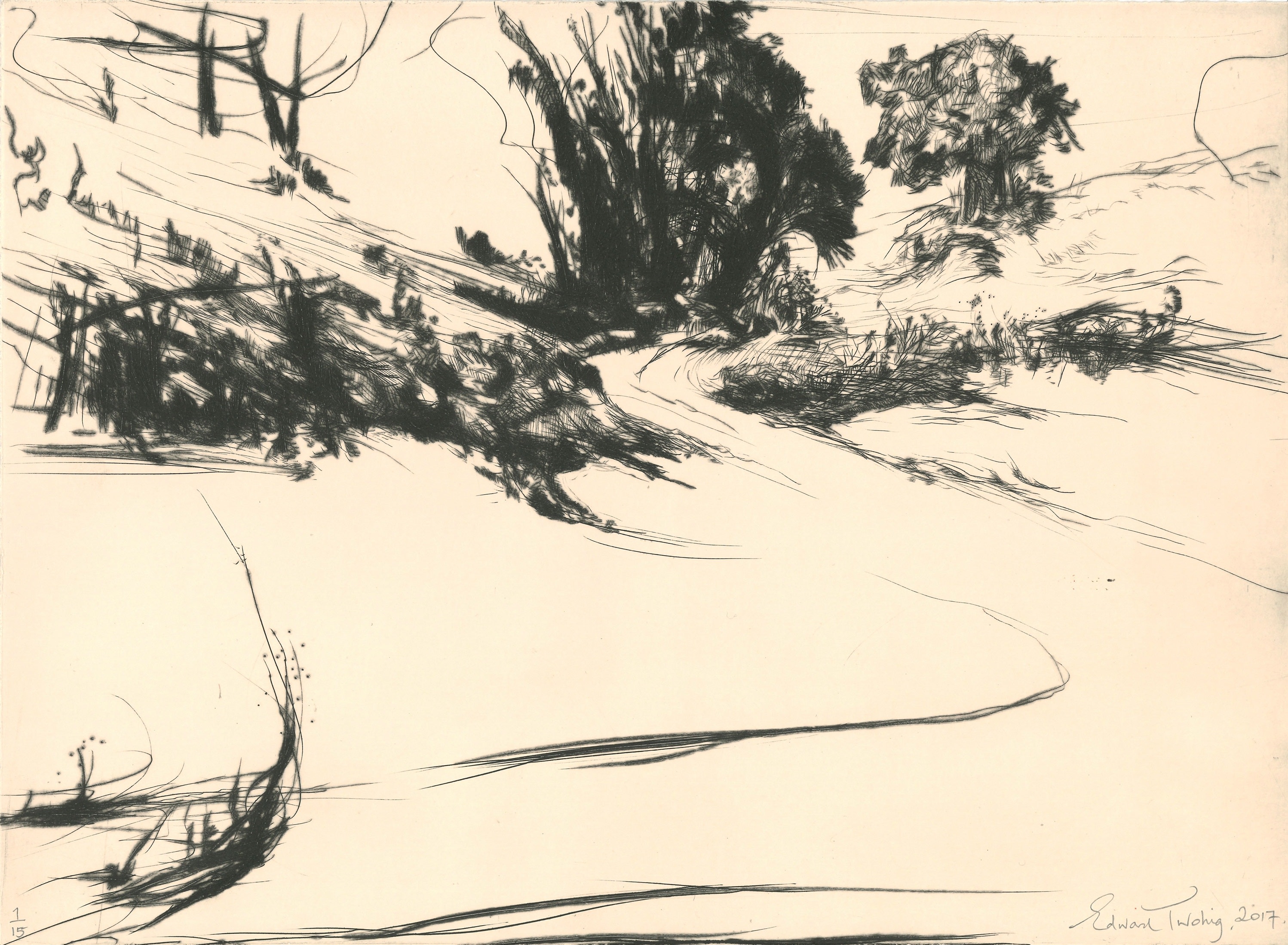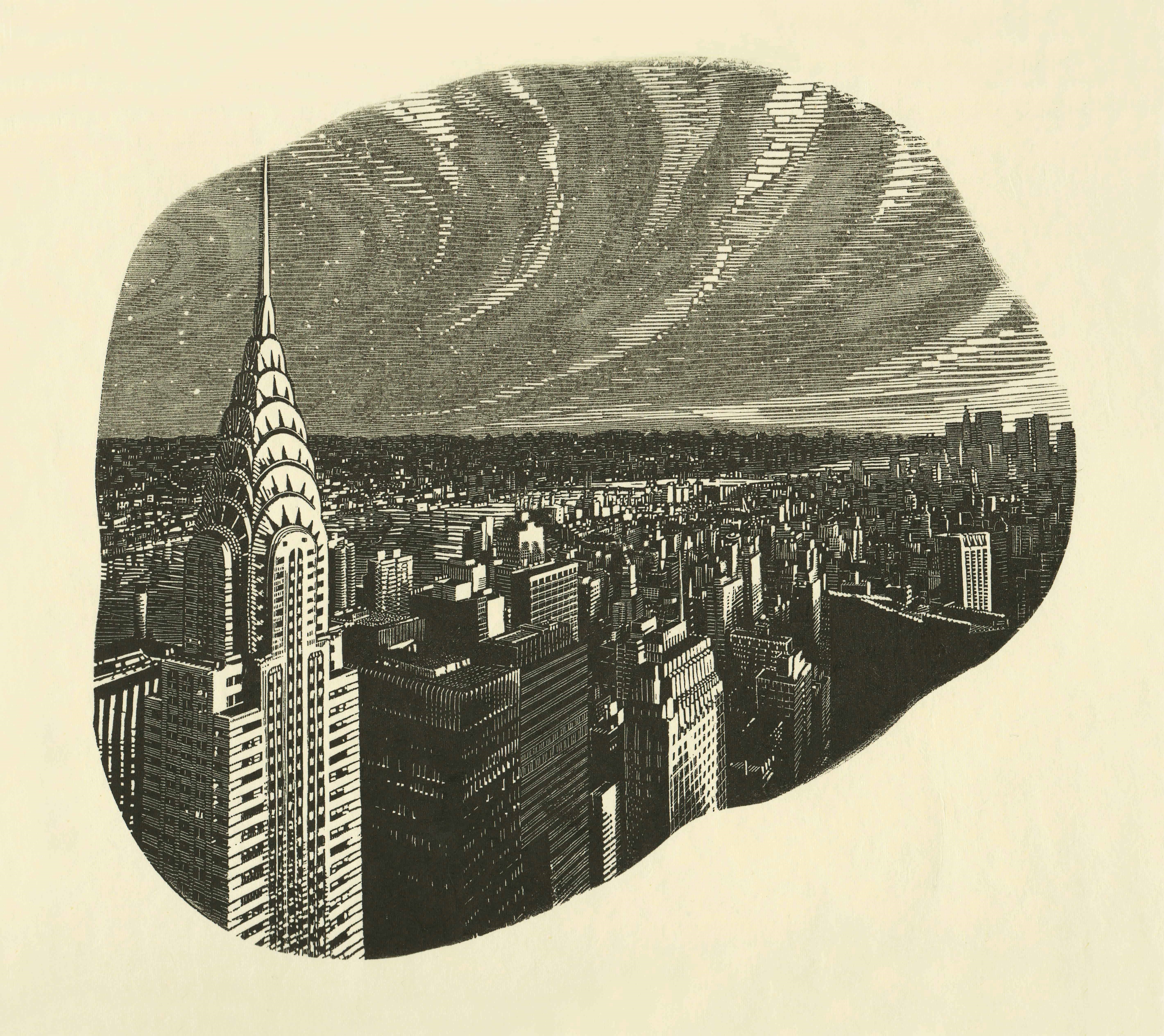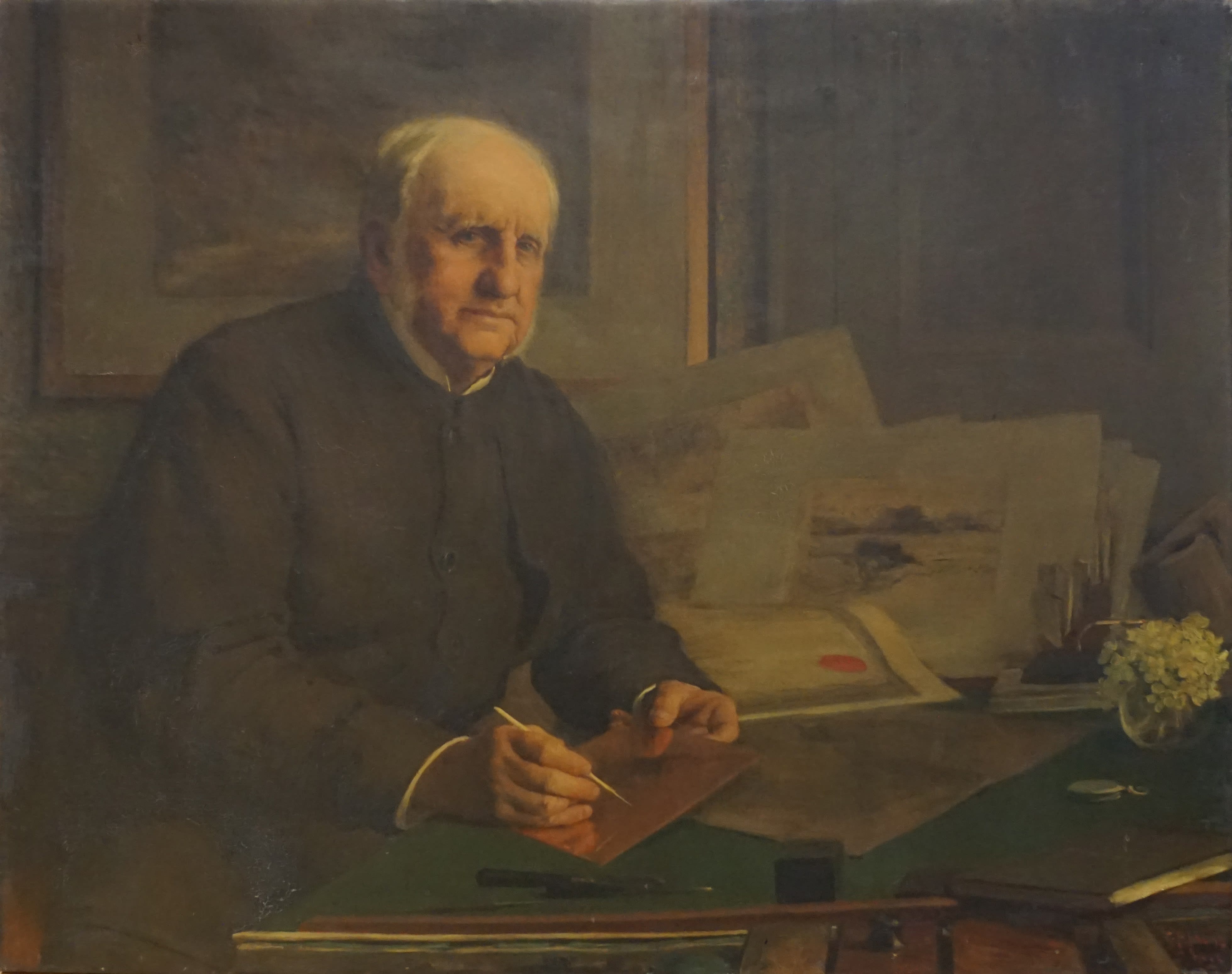This spring, the Royal Society of Painter-Printmakers marks the 200th anniversary of the birth of the founder and first President of the RE, Sir Francis Seymour Haden, with an exhibition reflecting on its past and present members, the history, and the legacy of the Society. Print REbels will bring together a prestigious collection of prints, by Haden and those who inspired him such as Rembrandt and Dürer, and his contemporaries, including Samuel Palmer and JAM Whistler.
Print REbels is the brainchild of Edward Twohig ARE, whose passion and knowledge for the medium of print has fuelled this ambitious project. Twohig is a printmaker, collector, and Head of Art at Marlborough College. He has generously loaned many works from his private collection for this exhibition, and talks to Bankside Gallery’s Natalie Suggitt about his extensive work on the show and accompanying catalogue.
Where did the idea for ‘Print REbels’ come from, and can you explain the reason for choosing this title?
Borrowing from a library ‘Etching and Etchers’ by Ernest Stephen Lumsden RE and ‘English Prints for the Collector’ by Stephen Calloway made me realise the importance of ongoing legacy within printmaking. Each of these books illustrate just how rebellious the first and second Presidents of the RE were. Each literally carved a niche for practices that we almost take for granted such as the artist adding their signature to a finished original print.
Haden, flanked by Palmer and Whistler, can correctly be seen as rebels when each commenced their own individual etching voyage which in turn became an inspiration for thousands of printmakers sparking the 75-year-long Etching Revival in Britain, one of the longest recognised movements in art history. The idea of Print REbels grew out of the story of these three creative etchers successfully navigating their way into the mainstream of British art during a period in mid-Victorian London when printmaking was considered merely a means of reproducing artists’ paintings rather than as a richly creative medium in its own right.

Furthermore, Seymour Haden rebelled against and was outraged by the Royal Academy as they did not recognise creative printmaking on a par with painting, sculpture or architecture. Due to this Haden founded the Society of Painter-Etchers in 1880 which gained Royal status in 1888. His tireless campaigning to promote original, creative etching ultimately made him a revered establishment figure, earning him a knighthood in 1893. Print REbels’ central narrative is the legacy of Haden and successive RE Presidents to this day. I hope that this exhibition of RE Members’ prints, historic and contemporary, will bring this legacy back into the public eye where it surely belongs.
When did you begin collecting prints and what was it that inspired you to accumulate such an impressive collection?
In 1987, Richard Wood, a businessman-farmer, visited the Crawford Art College in Cork, where I was studying Art Foundation. He gave an illustrated talk about his collection of paintings. Up to then I was aware of great works of art being housed in galleries and museums but not domestically. Richard Wood’s talk not only changed me but provided a deep rooted emotional and intellectual channel.
Not long after I asked my grandmother for a loan to acquire a proof impression of ‘Mytton Hall’ by Sir Francis Seymour Haden that captivated me through a shop window. I was 17. This was a significant personal milestone and I remember the singular joy in having this drypoint placed in my hands. I purchased ‘St Eustace’ by German Renaissance artist Albrecht Dürer when I was 22. I completed my Samuel Palmer collection, with states, in 2013 after a 25-year quest.

I am presently guardian to over 7,000 original prints and yet feel I have only begun collecting. It is a privilege, humbling and educational, to be surrounded by such enlightening company. Outside the Northern Renaissance, French and Azeri Schools, the bulk of my collection is by Etching Revival and Etching Boom British etchers from the late 19th to mid-20th century. The list reads like an RE roll-call. Such works I acquire but, in truth, they acquire me.
I have one very simple rule regarding acquisition of art and I am happy to share. It is this: if my spine does not tingle, my heart race and my mind not arrested within one second on seeing a composition then I’m not interested and move on.
What is your most treasured print from your collection?
Oh! Such a tough question especially as my delight and enjoyment with one composition or medium changes by the day, sometimes the hour and more frequently by the minute. Of course it depends on mood, circumstance and place but I cannot put into words the enjoyment I get from each work. Each artist’s skill is intrinsic and alive but it is much more: I wish to go on looking at them, absorb their mystery and make them part of my life; to bring this enjoyment to my living space and co-exist with the infinite beauty of incised line by an old master, modern or contemporary printmaker.
Has your admiration of the artists whose work you collect affected your own practice and if so, how?
Of course: my attraction to the endless range, dialogue and expressive beauty of line is constantly sharpened and heightened. Knowing when to stop, reticence, and the bravery in employing empty space are three of the many lessons gained on observing works from my family of prints.
[Part of this exhibition will showcase the Print REbels Portfolio which is comprised of new works by current RE Members, made specifically in response to the Society’s heritage. Artists were invited to make a work relating to or inspired by a past or present RE Member (as well as Haden’s inspirations, Dürer, Rembrandt and Whistler). Twenty-five of these works have been selected by Jenny Ramkalawon, Assistant Keeper of Prints and Drawings at the British Museum for a Print REbels boxset. For this, Edward Twohig has created a drypoint from observation called Between Pewsey and Marlborough (pictured below).]

Which RE Member was your inspiration for this piece and what was the reason for your choice?
Sir Francis Seymour Haden was my immediate choice. I love especially the virtuoso drypoints he created outdoors capturing atmosphere, space, light, shadow, intense sunlight and overcast cloud, sometimes reticent, sometimes not. I moved to Wiltshire in the summer of 2017 and the surrounding landscape is magnetic so Haden and Marlborough are a happy fusion.

[An extensive catalogue is being produced to accompany the exhibition. RE Members Anne Desmet RA RE (above) and Joe Winkelman PPRE (below) have compiled a rich timeline of Sir Francis Seymour Haden’s life and its intertwining with the RE. Essays also feature: Elizabeth Harvey-Lee Hon RE on Haden and his legacy and Professor Robert Meyrick Hon RE on the RE and 20th century printmaking. Edward Twohig shares his extensive knowledge of this area of printmaking also, and has written many of the explanatory captions for each of the historical images featured. Stuart Southall, who is the sponsor for the exhibition, has written “REbels promises to be a superb publication for us print lovers” and “it’s getting more and more exciting the more I read”.]

This catalogue has been a huge undertaking for you, what are you hoping the finished product will achieve?
Much of this exhibition and catalogue will highlight works by RE founder members: important milestones in the early years of the Etching Revival into the 20th century as well as the Etching Boom years immediately before and after the 1914-18 Great War. Thus it will give a visually wide-ranging exhibition and snapshot of the RE’s beginnings as well as highlighting ongoing links with the RA and the visual and emotional connections current RE Members make with the fascinating history of their Society.
Previously unpublished material sheds new light on the founding fathers and early years of the RE. There have been two books published previously on the history of the RE: the first in 1930 and the second for the millennium. REbels will be a departure from both, not least as it is written by a printmaker and one I hope that will show clearly, through text and images, the continuing rich heritage of the Royal Society of Painter- Printmakers.
What do you think Haden would make of today’s RE?
If Sir Francis Seymour Haden were living amongst us today I suspect he wouldn’t say much outright because he would be purring and grinning like a Cheshire cat at what his eagle insightful eye and mind would be processing. First and foremost Haden would be overjoyed the Society he founded is flourishing and what he built up has been built upon and is maintained 148 years on. That both the structures of acceptance by peer review based on the work alone regardless of gender or nationality, and the RE governance remain almost exactly the same as he founded would please Haden no end! I suspect our founding President would be pleasantly bewildered by coloured prints and would be keen to know how to create screen-prints especially with the incorporation of digital. He would love ‘The Masters’ series of exhibitions that focus on printmaking techniques. More than anything, though, Haden would be humbled by the commitment to original printmaking by all RE Members in giving nothing less than 100% to creativity and perseverance and would appreciate the fact that this is no easy thing in early 21st century existence.

What does it mean to you to be an RE Member and how do you see the Society’s role continuing for future Members and for printmaking in general?
Membership of the RE, which was and still is, restricted in number in order to make it a mark of distinction, is by election on the basis of work submitted to the Society’s Council for peer review. To be elected in this way and also, more recently, help in the process of electing new Members is a privilege. Camaraderie, friendships and support are formed amongst Members: the sharing of ideas, techniques, tools and printmaking equipment and seeing one another’s work on the walls in annual and seasonal RE exhibitions. All this is practical, nourishing and inspiring. It was the same for past Members in the 1880’s and each decade afterwards as it will be in ten or fifty years’ time or when future Members of the RE will be celebrating the 300th anniversary of Sir Francis Seymour Haden.
More like this on the Blog...
Read: The Printmakers Glossary: Screen & Stone
Read: Straight from the printmaker's mouth
Read: What does 'RE' mean anyway?
Quiz: What type of printmakers are you?
Read / Watch: Linocut Printing: In the Studio with Anita Klein
Read / Watch: Relief Printing: In the Studio with Trevor Price

